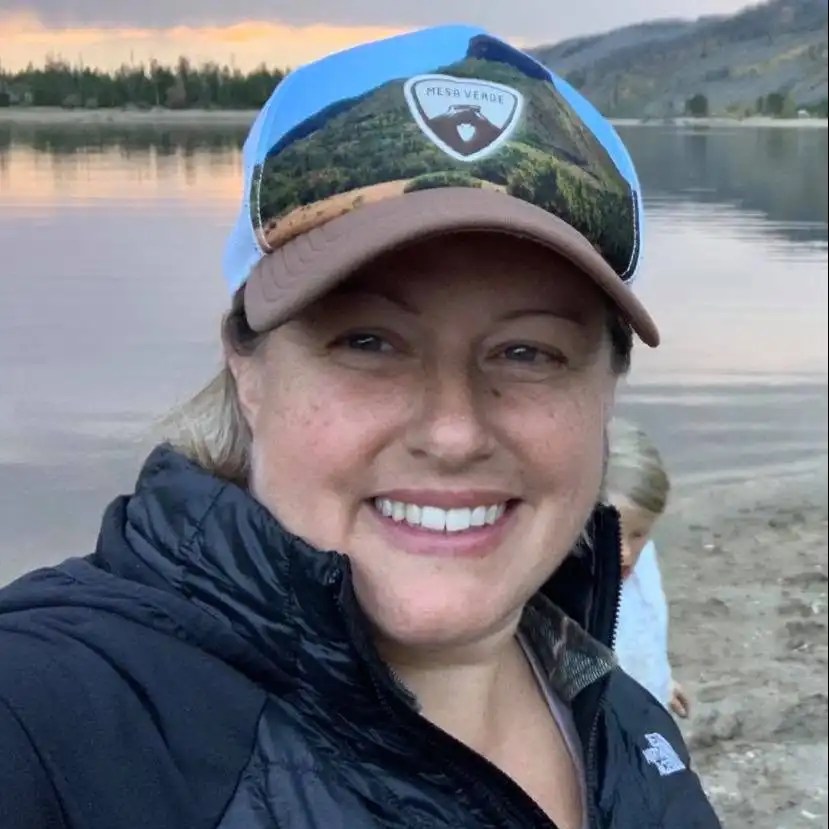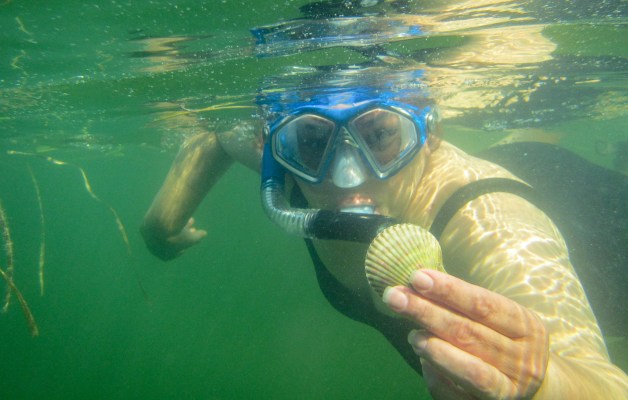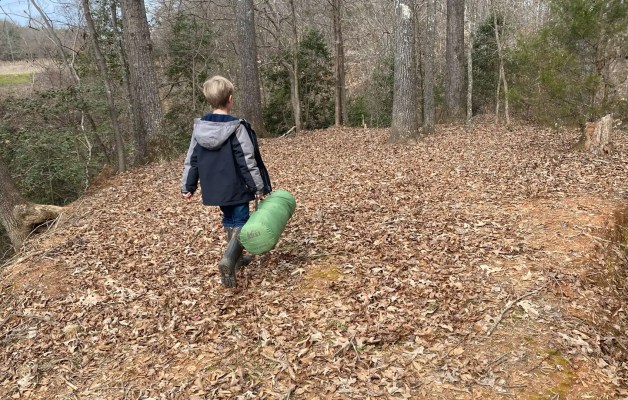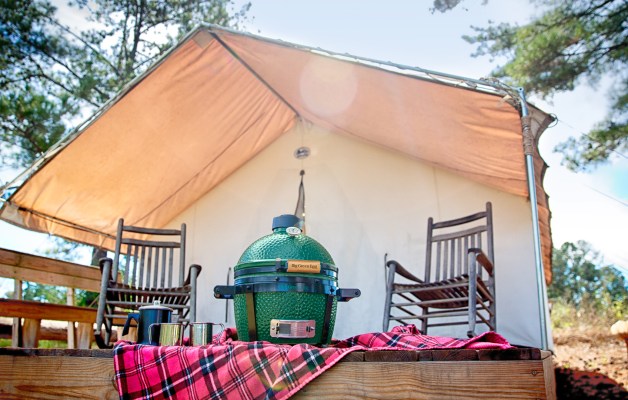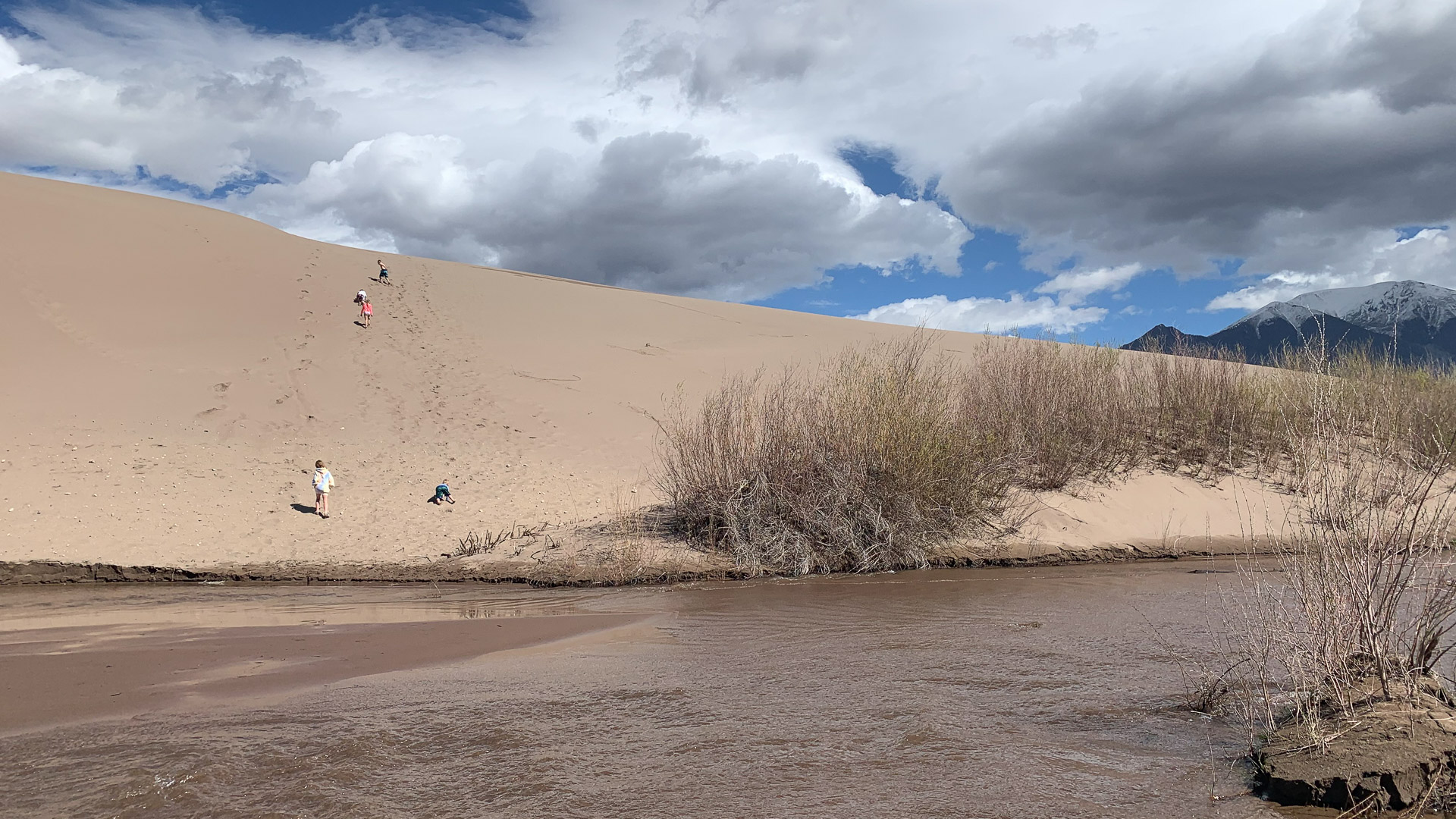
When you first see the dunes of Great Sand Dunes National Park near Alamosa, Colo., you can’t help but feel like you are on a movie set. Even on my third visit there, I was still amazed at the sight of such a marvel. It was my daughter’s second visit, and she commented that the dunes are really a miraculous work of Mother Nature.

Since the dunes are always changing, new information is continually being discovered about their formation over the past thousands of years. The dunes are located within the San Luis Valley between the Sangre de Cristo and San Juan mountains. Forming for over 440,000 years, the sand is in part the remnants of an ancient lake that was formed by plate shift and uplift. From the Rio Grande River and its tributaries, soil and sand blow into the valley. Wind erosion from nearby rocks and mountains also contributes to the change and growth of the dunes.
Given national monument status by President Herbert Hoover in 1932, the park was given national park status in early 2000. If you are into geology, a trip to the visitor center is a good spot to start your visit. There are displays inside and outside around the perimeter of the center with details on how the dunes are formed. Inside displays were off-limits due to COVID-19 on this visit, but there typically are some interactive displays that explain how the tallest dunes in North America continue to evolve.

Be sure to also grab a junior ranger book for your kiddo to complete to earn the Great Sand Dunes National Park badge. Recognized as an International Dark Sky Park, it is also a great place for enthusiasts to earn their Junior Ranger Night Explorers badge.
On this trip, we decided to stop at the visitor center another day since the sky was looking dark and the wind was picking up. We wanted to be sure to get our base camp for the next few days set up quickly in case it rained. That’s the thing about late spring and summer at the sand dunes: Afternoon thunderstorms are common, as well as wind. Definitely consider bringing a canopy and heavy-duty tent stakes on your trip here. Read on and you will discover from my experience why.
The sky continued to grow darker and the wind blew steadily as we found our two spots at the Piñon Flats Campground within the national park grounds. This is the only lodging within the park, so it takes some luck to grab one of the 86 spots through six months out. Be prepared to be online right when it opens up; this year it was at 8 a.m. MST. If you aren’t lucky enough to get a spot during the peak of the Medano Creek run (anywhere from mid- to late May through mid-June, depending on snow melt rates), be sure to join some of the Facebook pages where people sell campsites for trips they can no longer make.

As luck would have it, we couldn’t get two adjacent spots for our group of 10, but we were able to get spots fairly close to each other in loop 1. The spots in the middle of the loops are more shaded and tree covered. These sites were more buffeted by the wind, we came to realize. Some spots are smaller than others, so be sure to look up site details before you book to be sure your tents, pop-ups and/or RVs will fit. A good resource if you can’t find site photos on Recreation.gov is campsitephotos.com.

One site was bigger than the other, so we designated that as the site to put two tents and pop up the canopy over the picnic table for cooking, eating and playing games. The pop-up ended up being a godsend, buffering some of the wind and rain we would get over the next few days. The late afternoon and evening were spent setting up camp, dodging the rain and watching the kids make summer memories with other kids in the campground.
We woke up early the next morning ready for a day by the water. I made a quick trip about 10 minutes outside of the park to an RV and campground resort. It also has a general store where you can grab souvenirs, firewood, snacks, drinks and any item you may have forgotten. During this trip to the Oasis, I went to grab a sand board and sand sled for a day on the dunes. This is the closest place to the dunes to rent a board or sled. Rentals begin at 8 a.m., and I recommend you get there a few minutes before 8, especially on the weekends. The cost is $20 plus tax per day, and rentals are due back by 4 p.m.

With the daily threat of storms and how much the sand heats up throughout the day, I can’t emphasize enough to get to the dunes and water as early as possible. After I grabbed the sled and board, we packed up the car and headed to the dunes. If you want to avoid the crowds of day visitors to the park and are up for an adventure, take the Medano Pass Primitive Road, a 4×4 road to one of the more secluded areas of the park. Conditions change along the road, and travelers may encounter deep areas of sand, rutted road conditions and maybe water. I recommend calling the visitor center and/or to check the sign at the road entrance for current conditions.

Thankfully, you can access two of the primitive areas, Sand Pit and Castle Creek, before the first water crossing. We headed down the rutted road in our four-wheel-drive Subaru to Castle Creek for our first day of fun on the sand. Castle Creek is a popular picnic area and has a pit toilet. Located about 1.5 miles from the start of Medano Pass Primitive Road, this area features lots of room to spread out and set up camp chairs and towels for a full day by the water. The parking lot is also close to the dunes, making it an ideal spot, especially with younger children.

Since it was a weekday, we were the only ones at Castle Creek for the first two hours. The kids took turns riding the sled and board. I even got into the fun, taking a few runs before my calves couldn’t take another climb up the sand. The tallest part of the dunes is in this area, so it was a bit steep for long rides. Medano Creek was flowing, but tube rides were short with the low flow.
By 12 p.m., the sand was getting too hot to walk on, even with shoes. The kids spent the early afternoon hours playing in the water with sand toys. Wet and covered in sand, a storm had us packing up quickly and heading back to the campsite mid-afternoon. The rest of the afternoon and evening were spent cooking on the grill over the campfire ring, playing Farkle and watching the kids do laps on their scooters in between the short rain showers.

The forecast called for cooler temps on our second morning, so we decided to head to the Colorado Gators Reptile Park in nearby Mosca. About a 30-minute drive from the campground, it’s a bit of a rite of passage to stop there when visiting the dunes. Open to the public since 1990, the park is home to six rare albino gators and the movie star gator, named Morris, from Happy Gilmore and other films. Part of admission is the chance to hold a baby gator and a python — if you’re brave enough. Be sure to ask for the bucket of chum for $2.50 to feed the gators. It’s not highly advertised, but it’s quite the experience. Expect to spend about 1.5 hours there checking out the exotic pet collection, including African sulcata tortoises, various anacondas and Nile crocodiles.

Another unique experience in nearby Hooper, Colo., is the UFO Watchtower. If you have some time, you can check out the area said to be home to numerous UFO sightings. We saved the UFOs for another visit, and the wind began swirling by the time we got back to the campground.
Getting back to the campsite when we did ended up being a blessing. After finishing lunch, we planned to take one of the few paths that lead from the campground down to the dunes. As we grabbed the sand toys, towels, etc., the wind began to gust consistently. Before we knew it, one of our tents was in the air. With a quick jump, my friend was able to grab it before it completely blew away. I knew it was time to dig into the bottom of the camp box to grab the heavy-duty stakes.
After that excitement, our nighttime excitement came in the form of a few deer visiting the campground. Mule deer frequent the area, especially around dusk. Look up and you are more than likely to see a bat, or possibly a great horned owl, from dusk into the evening. We had an owl swoop over our heads on a past visit to the dunes. This trip we only saw a few bats flying above the piñon pine trees.

If you seek some nighttime adventure, grab a headlamp or flashlight (preferably with a red light) and go for a nighttime walk around the campground or on the dunes. With no light pollution, you can see the whole night sky, including the Milky Way. If it happens to be a full moon evening, you won’t even need a light as you explore the dunes, looking for salamanders, kangaroo rats or coyotes. There are bear boxes at the campground (be sure to use them to avoid a fine), but I have yet to see any during my multiple trips there. Beyond using your sight, keep those ears open, too. The night brings a sound experience where the hoot of owls, the croak of frogs and the swirling sand can all heighten your senses.
Our last day in the park, we headed back down Medano Creek Primitive Road to the Sand Pit. Since it was a weekend, we ended up having to park one car behind the other in the smaller lot. Prepare for a bit of a haul from the parking lot to the dunes area. The walk downhill to the dunes isn’t bad, but the hike up after a day in the sun is tough. With young kids, footing and trudging through deeper sand is also something to think about.

A half-hour into our visit to the Sand Pit, we saw a group of horseback riders come over the dune and cross the creek. Put that on my list of things to do on my next trip to the park! Digging holes, rolling down the dunes, cooling off in the creek and taking in the view from the top were all on the day’s agenda.
Back at the campsite, we got dinner going a bit early. The sky was getting dark, and local weathercasts said that areas close by were under a tornado watch. The wind did its daily afternoon pickup. We could see the heat lightning as the clouds moved above the dunes. As it got later in the evening, the wind that usually died down around 9 p.m. actually picked up in strength. The start of a rain shower had us heading to our tents to hunker down for the night.
The wind howled all night, making the tent walls cave in and out. At some points, it seemed that the wind was coming from all directions. Rain fell most of the night, with a brief hailstorm coming through, as well. The children slept soundly through the event, thankfully, while half of the adults in our party stayed up until the weather finally passed through around 3 a.m.
Our last morning, we broke down camp and hit the road early. While the dunes are only 4 to 4.5 hours away, Sunday summer traffic can easily add an hour or more to the drive. With windburned lips, sunburned cheeks and sandy hair, we headed home after a trip I think we will never forget.
Despite the weather challenges, we had an amazing time playing in the 30 square mile sand dune field that is tucked within the backdrop of the Sangre de Cristo Mountains. I just might be on Recreation.gov this November again to snag a site for 2022.

Top Sand Dune Tips:
Campground reservations open six months out on Recreation.gov. I recommend staying at the campground within the park to maximize your time at the dunes.
Rent sand boards and sleds at the Oasis. Be sure to be there close to opening, especially on the weekends, to make sure you get what you want.
Get to the sand early for the best spots to set up and to avoid typical afternoon showers, wind and hot sand.
Be prepared for afternoon campground downtime by bringing card and dice games and various campground-friendly toys and games for the kids, too.
Bring a canopy to help buffer the wind and rain and to offer a place for shade and an alternative to camping out in your tent during a storm.
Go off the beaten path along the Medano Creek Primitive Road to play on the dunes away from the main crowds. Just be sure to head out early to get one of the coveted parking spots.
Bring sandals (Chacos/Tevas) for crossing the creek. Waterproof boots/shoes work as well.
There is no shower at the campground, so invest in a solar shower.
Pack plenty of sunscreen and ChapStick. Bring plenty of water to the dunes with you.
Don’t forget the heavy stakes for securing your tent.


